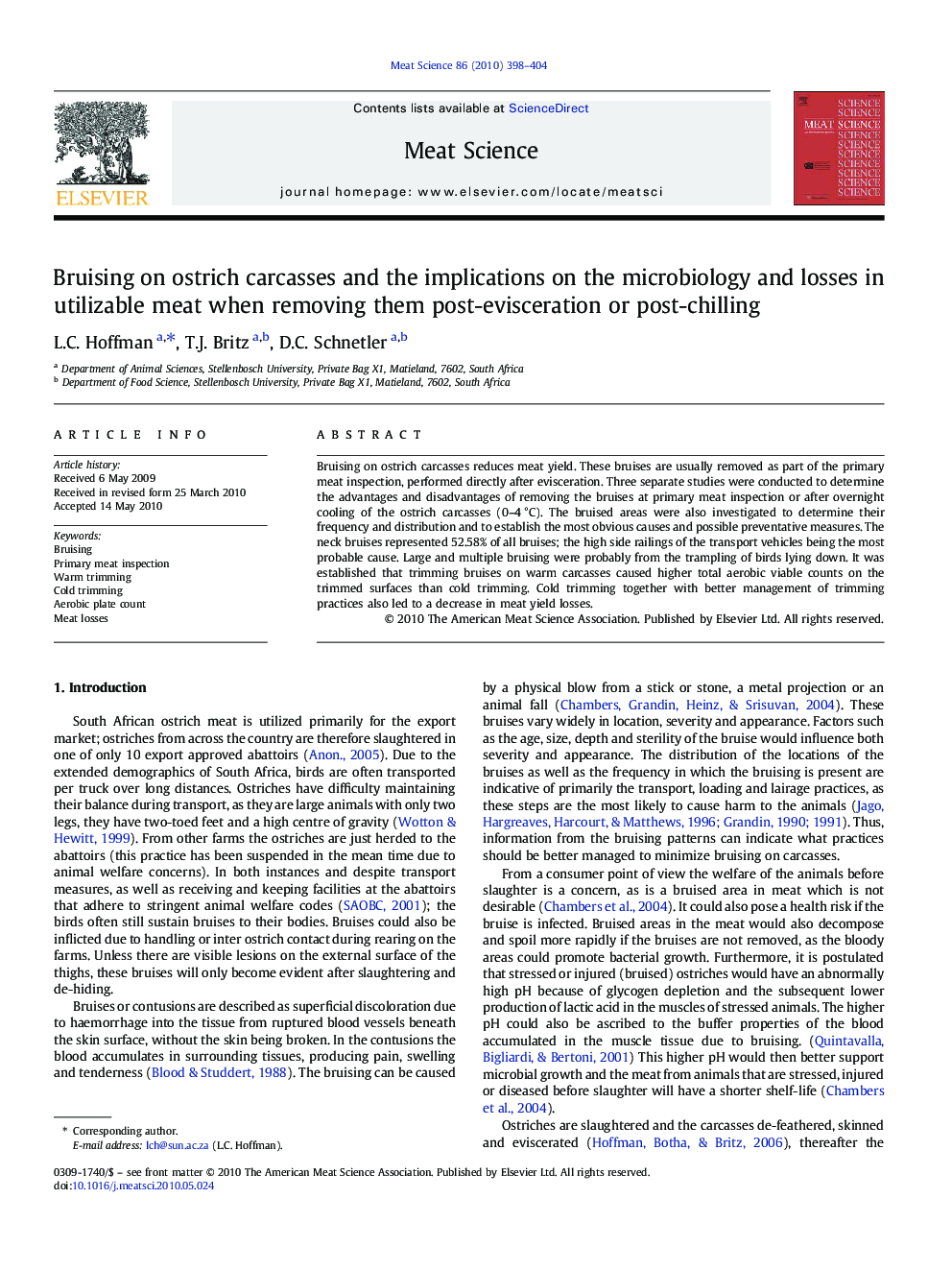| کد مقاله | کد نشریه | سال انتشار | مقاله انگلیسی | نسخه تمام متن |
|---|---|---|---|---|
| 2450293 | 1109644 | 2010 | 7 صفحه PDF | دانلود رایگان |

Bruising on ostrich carcasses reduces meat yield. These bruises are usually removed as part of the primary meat inspection, performed directly after evisceration. Three separate studies were conducted to determine the advantages and disadvantages of removing the bruises at primary meat inspection or after overnight cooling of the ostrich carcasses (0–4 °C). The bruised areas were also investigated to determine their frequency and distribution and to establish the most obvious causes and possible preventative measures. The neck bruises represented 52.58% of all bruises; the high side railings of the transport vehicles being the most probable cause. Large and multiple bruising were probably from the trampling of birds lying down. It was established that trimming bruises on warm carcasses caused higher total aerobic viable counts on the trimmed surfaces than cold trimming. Cold trimming together with better management of trimming practices also led to a decrease in meat yield losses.
Journal: Meat Science - Volume 86, Issue 2, October 2010, Pages 398–404